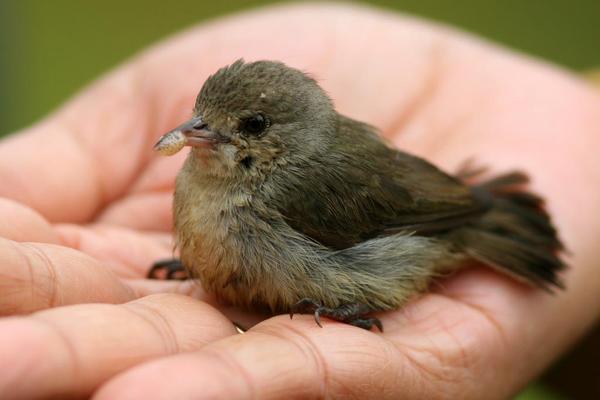Tiny birds -be it anykind- are truly the creatures that melt one’s heart. It is always a delight to see baby birds in the nests, with parents diligently flying around to get them food. Flowerpeckers are among the smallest birds in India. Here’s the heart-warming story of a tiny bird that was rescued.
We -a group of like-minded people – were on a nature trail on the Bannerghatta-Kaggalipura Road, when we found a Pale-billed Flowerpecker, which had been either pushed out of its nest, or had fallen from it before we could fly. Two young boys had picked it up, saving it from the stray dogs that were looking to gobble it up.
The little one was looking quite lost, but was able to peck at the grains the boys were offering it. We, too, did not want to interfere with the bird more than was necessary, so we went our way.

Pic: Deepa Mohan
One has to be very careful while picking up wild creatures; very often, the fear they have of humans overrides their distress, and they panic when approached. Sometimes, birds, whose heart-rates are much higher than ours, can literally die of the shock.
We hoped that this was a rescue story which would have a happy ending, as the bird seemed able to feed, and had been saved from the predators. But as in all true stories, we never did find out the ending!
For more information about this bird, click here
You can see them very often, especially in the Singapore Cherry trees which are planted near roadside restaurants on the outskirts of Bangalore.⊕
Uma Kandasarma says that this is an adult bird, not a baby..but it did seem like a baby to us.